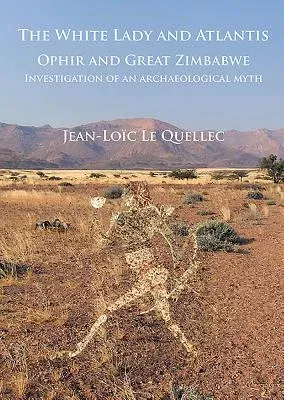This meticulous investigation, based around a famous rock image, the
'White Lady', makes it possible to take stock of the mythical
presuppositions that infuse a great deal of scientific research,
especially in the case of rock art studies. It also highlights the
existence of some surprising bridges between scholarly works and
literary or artistic productions (novels, films, comic strips, adventure
tales). The examination of the abbe Breuil's archives and correspondence
shows that the primary motivation of the work he carried out in southern
Africa like that of his pupil Henri Lhote in the Tassili was the search
for ancient, vanished 'white' colonies which were established, in
prehistory, in the heart of the dark continent. Both Breuil and Lhote
found paintings on African rocks that, in their view, depicted 'white
women' who were immediately interpreted as goddesses or queens of the
ancient kingdoms of which they believed they had found the vestiges. In
doing this, they were reviving and nourishing two myths at the same
time: that of a Saharan Atlantis for Henri Lhote and, for the abbe, that
of the identification of the great ruins of Zimbabwe with the mythical
city of Ophir from which, according to the Bible, King Solomon derived
his fabulous wealth. With hindsight we can now see very clearly that
their theories were merely a clumsy reflection of the ideas of their
time, particularly in the colonial context of the Sahara and in the
apartheid of South Africa. Without their knowledge, these two scholars'
scientific production was used to justify the white presence in Africa,
and it was widely manipulated to that end. And yet recent studies have
demonstrated that the 'White Lady' who so fascinated the abbe Breuil was
in reality neither white nor even a woman. One question remains: if such
an interpenetration of science and myth in the service of politics was
possible in the mid-20th century, could it happen today?

